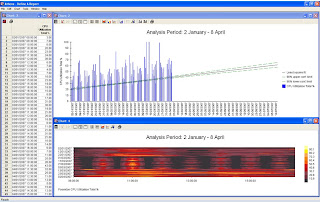Come along to St Paul’s Cathedral on Tuesday 7th June and find out how
Capacity Management can ensure the success of your Green IT initiative.
Virtualization enables Cloud enables Green IT.
However, ease of infrastructure roll out can lead to wasted resources, elasticity of the Cloud can mean over-use of resources carrying a premium cost and then your carbon footprint won’t fall as much as anticipated.
Metron and athene® bring you the knowledge and the tools to plan to maximize the benefits from these technologies, without incurring any unnecessary overheads.
In addition to some sparkling presentations and discussion about capacity management for Green IT, Cloud and Virtualization, the seminar includes a private guided tour of St Paul’s.
Places are limited, so contact us now to reserve your place...we hope to see you there.
Andrew Smith
Chief Sales & Marketing Officer
http://www.metron-athene.com/training/seminars/cloud_virtualization_greenIT_seminar.html
Capacity Management can ensure the success of your Green IT initiative.
We’re holding a FREE seminar in The Crypt at St Paul’s showing the inter-relationship between Green IT, Cloud and Virtualization.
Virtualization enables Cloud enables Green IT.
However, ease of infrastructure roll out can lead to wasted resources, elasticity of the Cloud can mean over-use of resources carrying a premium cost and then your carbon footprint won’t fall as much as anticipated.
As ever, one needs to plan to succeed.
Metron and athene® bring you the knowledge and the tools to plan to maximize the benefits from these technologies, without incurring any unnecessary overheads.
In addition to some sparkling presentations and discussion about capacity management for Green IT, Cloud and Virtualization, the seminar includes a private guided tour of St Paul’s.
Places are limited, so contact us now to reserve your place...we hope to see you there.
Andrew Smith
Chief Sales & Marketing Officer
http://www.metron-athene.com/training/seminars/cloud_virtualization_greenIT_seminar.html



